Signal Modes
The LuxAlgo Signals & Overlays toolkit displays signals that indicates the current trend direction in the price and aim to support the analysis of the trader. There are two main signal methodologies available, each one fitting a different trading style, Confirmation signals, and Contrarian signals. The following subsections describe these two methodologies in detail.
info
Focusing on using other features within our toolkit alongside the provided signals will likely be the best decision for you rather than using them alone.
Confirmation + Exits
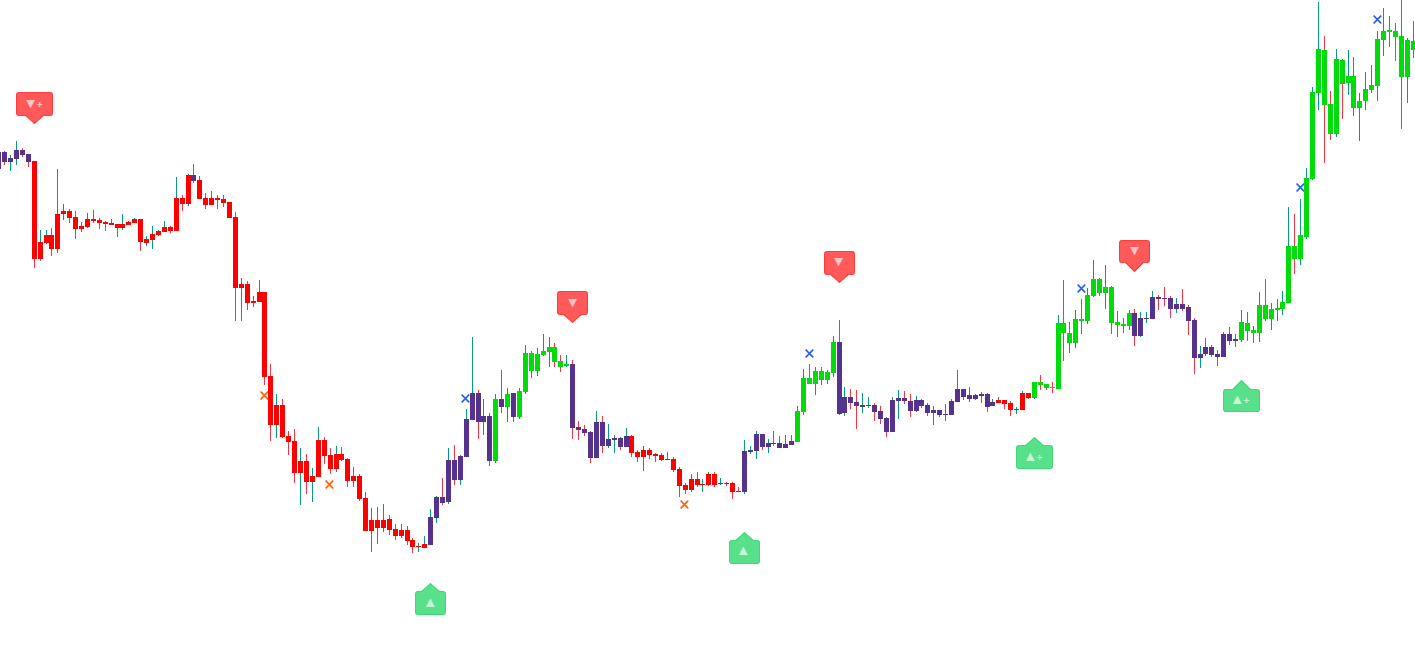
Confirmation signals are based on a performance adaptive trend following methodology. As the name suggests, they aim to confirm any potential action a trader might take and are more effective when used in confluence with other indicators.
There exist two types of Confirmation signals, normal signals, and strong (+) signals. Strong (+) signals are signals that are in accordance with the current estimated trend, while normal signals can be caused by a retracement.
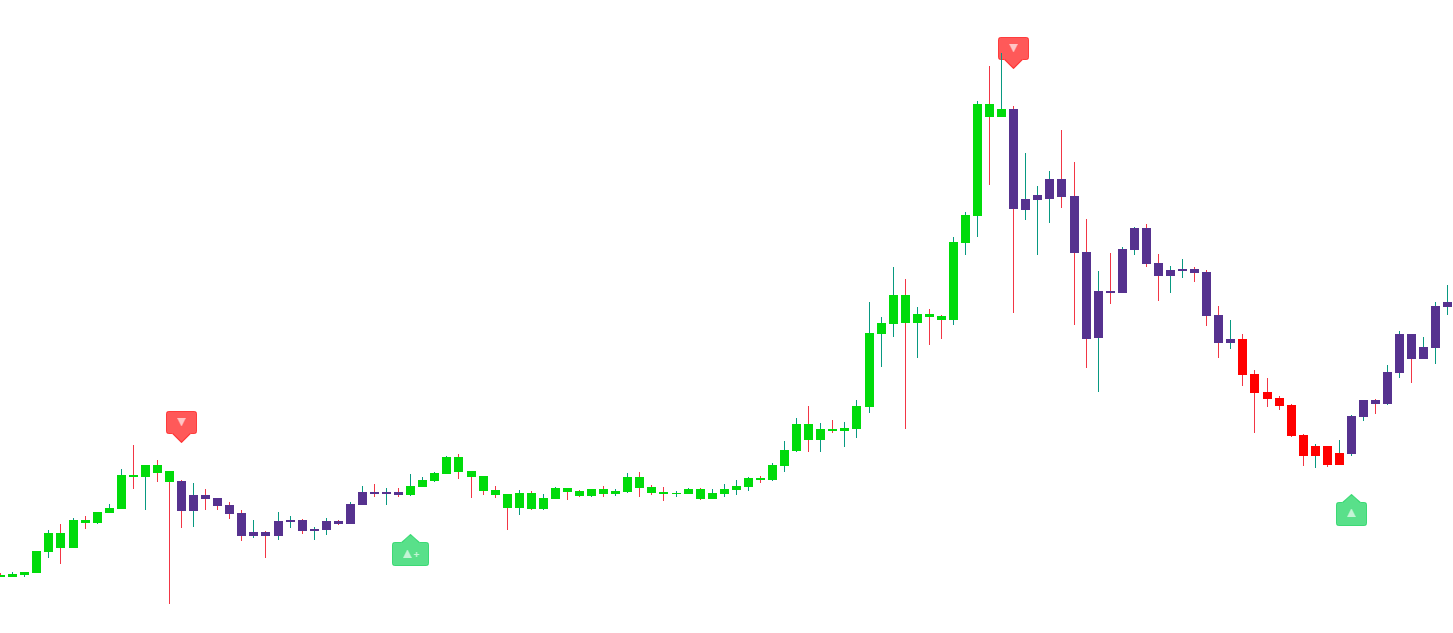
The Confirmation signal mode includes exit signals (represented by colored crosses). A bullish exit signal is displayed as a blue cross, while a bearish exit is displayed as an orange cross.
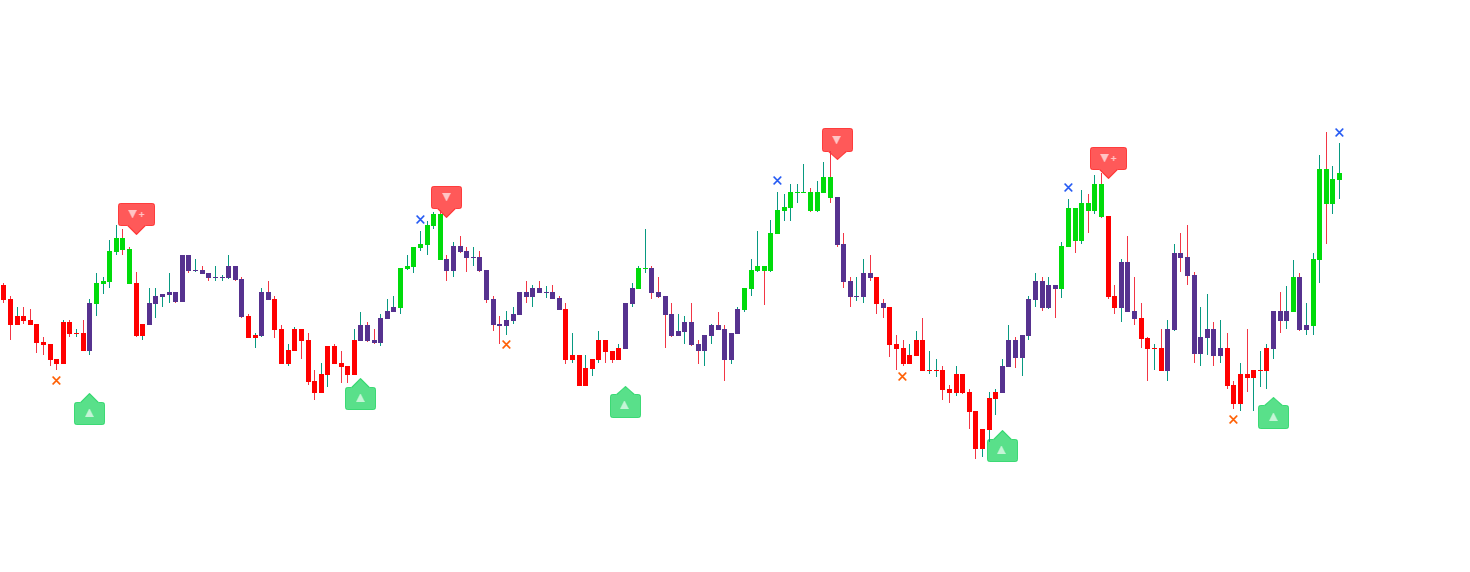
These exits signals aim to exit a position based on a previous confirmation signal at the highest price possible. Also, note that such exits would always exit a previous confirmation signal on a win.
info
Successive exit signals can occur during longer-term trends, as such the user can do partial exits instead of exiting an entire position.
Contrarian + Exits
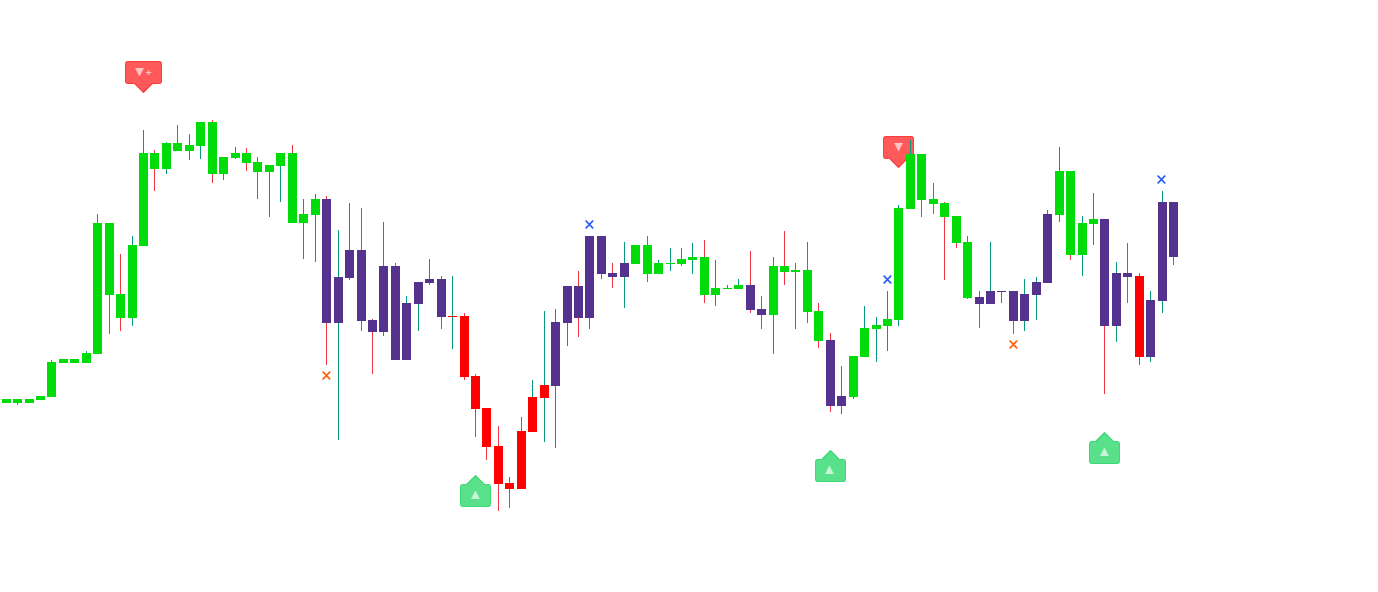
Contrarian signals go in opposition to the current market sentiment, aiming to deliver extremely fast decision timing, more simply put, contrarian signals aim to spot potential tops and bottoms.
The advantage of contrarian methodologies is that they are less subject to lag than most trend-following methodologies, thus allowing for potentially higher profits. However, it must be noted that going against the trend exposes the trader to larger price variations, which means potentially higher losses.
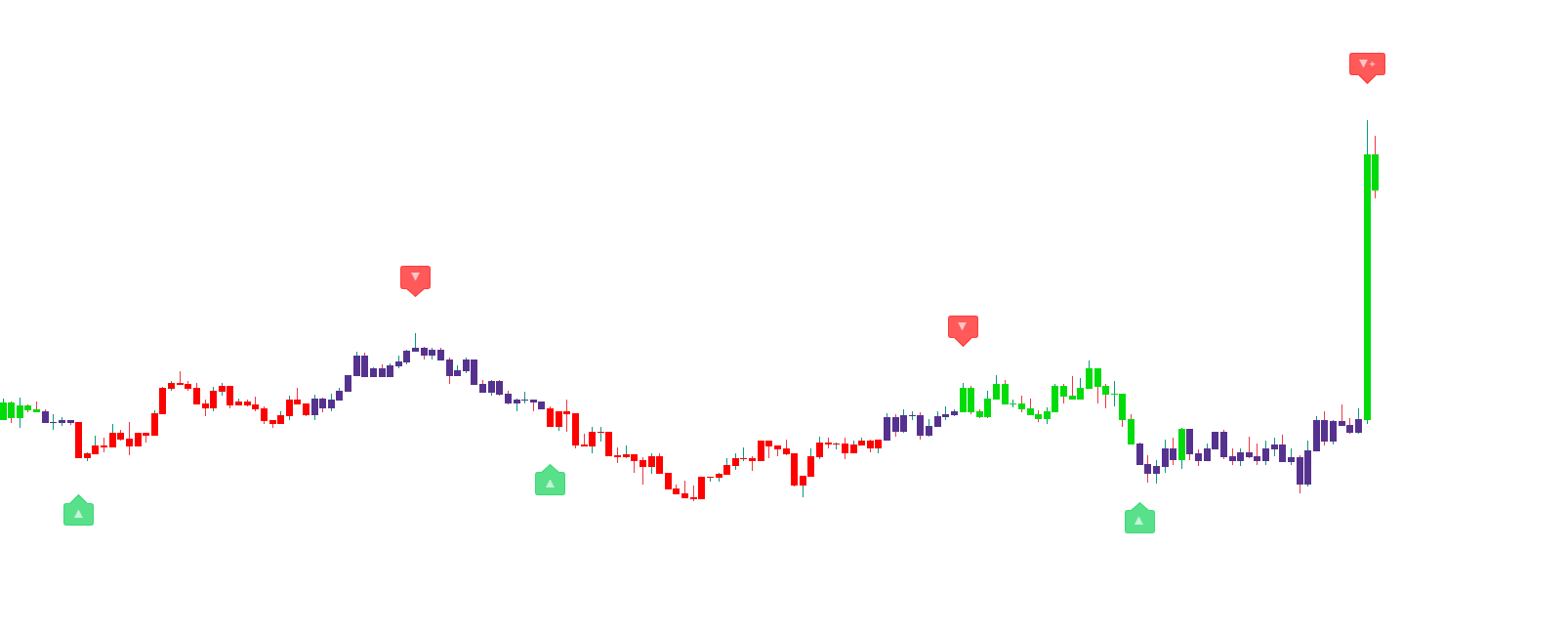
Like the confirmation signals, some contrarian signals can also be labeled as strong, these occur when the price is excessively overbought or oversold, and have more chances of indicating a potential reversal.
info
Extra confirmation such as declining volume or the occurrence of the signal near a significant support/resistance can be useful to tell when a signal is indicative of a reversal.
You can also use the contrarian signals more safely by exiting a position rather than opening them when a signal occurs.
The Contrarian signal mode also includes exit signals. A bullish exit signal is displayed as a blue cross, while a bearish exit is displayed as an orange cross.
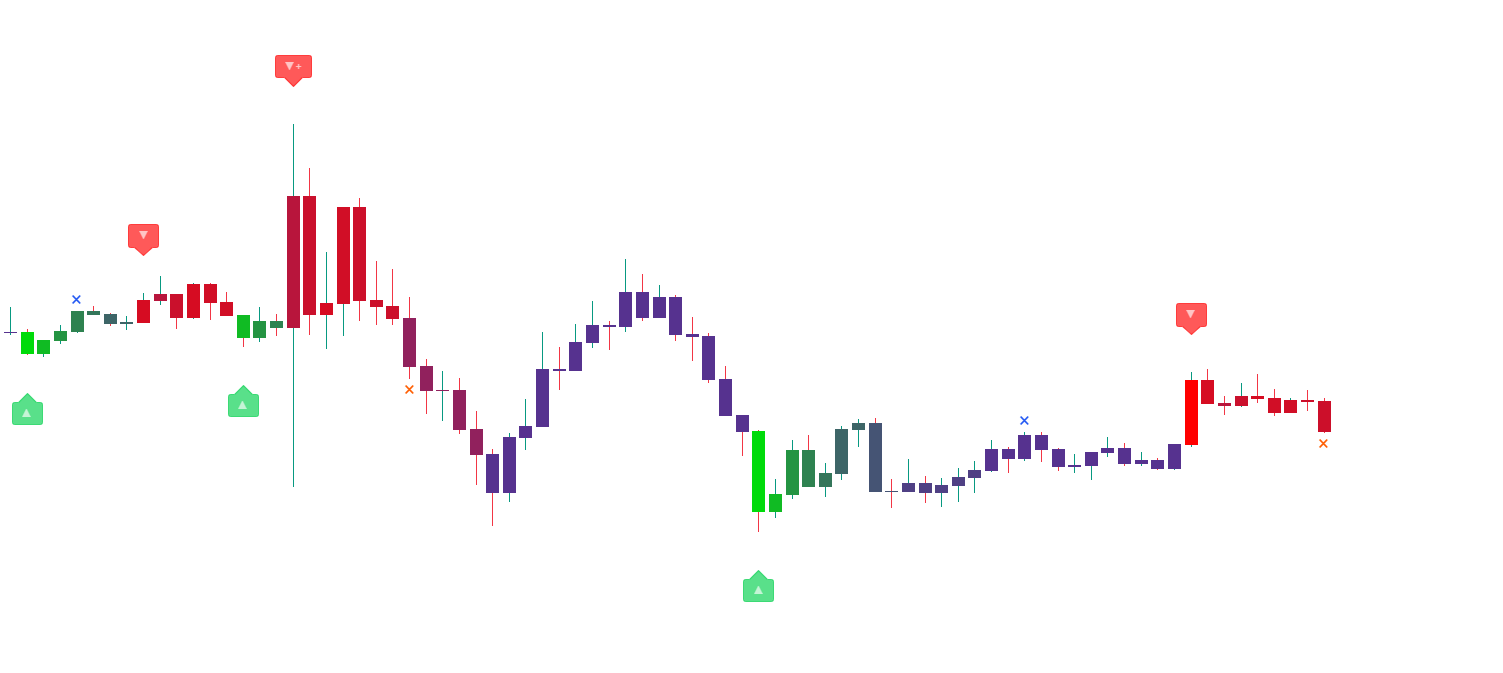
Like with Confirmation signals, Contrarian exits would always exit a previous confirmation signal on a win. However note that successive exits will not occur for Contrarian signals.
tip
Contrarian Exits can be helpful when price temporarily moves in accordance with a displayed Contrarian signal before reversing, rendering the signal false.
If the user is confident that price might still evolve in accordance with a previously displayed Contrarian signal, the exit can be ignored or could lead to a partial exit only.
Display
It is possible to choose what type of signals you want to display as well as displaying no signals at all, this is done from the settings panel in the signal mode drop-down menu.

By default Confirmation + Exits is selected. None will not display any signal on the chart.
caution
Signals are confirmed at the opening of the next candle, if you see a signal displayed on the most recent candle remember that it might be subject to change.
CFTC Rule 4.41 - Hypothetical or Simulated performance results have certain limitations, unlike an actual performance record, simulated results do not represent actual trading. Also, since the trades have not been executed, the results may have under-or-over compensated for the impact, if any, of certain market factors, such as lack of liquidity. Simulated trading programs in general are also subject to the fact that they are designed with the benefit of hindsight. No representation is being made that any account will or is likely to achieve profit or losses similar to those shown.